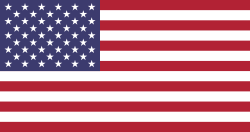POSTOPERATIVE VENTRAL HERNIA. SURGERY AND PREVENTION OF WOUND COMPLICATIONS. LITERATURE REVIEW
Introduction. In today’s Kazakhstani and foreign literature there are lots of works devoted to the study of postoperative ventral hernia. However, the results of their surgical treatments do not always suit both clinicians and the patients themselves [5, 9, 47, 53, 55, 74]. The development of infectious wound complications in the postoperative period is one of the reasons for the increase in hospitalization duration, the occurrence of hernia recurrence, and the increase in treatment costs [34, 76, 78, 79].
Purpose.To review the literature data on the surgical treatment of postoperative ventral hernias and the prevention of wound complications after hernioplasty.
Search strategy. The analysis of full-text scientific publications in the databases of Google Scholar, E-library.ru, PubMed, Cyberleninka, as well as the “manual” analysis of literary sources was carried out. The period studied was 47 years, from 1970 to 2017. Epidemiology, pathogenesis, recurrence rate, a variety of surgical treatment methods for postoperative ventral hernias were studied.
Criteria for inclusion: reports of randomized and cohort studies conducted on large populations, systematic reviews, full versions of articles. In order to conduct a literary review, literature in Russian and English languages was studied as well.
Criteria for exclusion: articles describing isolated cases, summaries of reports, private messages and newspaper publications, abstracts, personal messages.
A total of 1435 sources were found, 80 of which were selected for further analysis.
Results. Modern concepts of treating patients with postoperative ventral hernia consist in the use of hernioplasty using mesh endoprostheses [62, 68]. However, their use is accompanied by high rates of wound complications, which include seromas, infiltrates, rupture and wrinkling of the endoprosthesis [20]. One of the ways to eliminate the hernia orifice and prevent wound complications is autodermal plastics [61], the others consider the location of grafts requiring clarification to be the cause of wound complications after hernioplasty. In addition, it is also important to develop simple, effective ways to prevent complications of postoperative wounds using physical methods of treatment under ultrasound guidance and indicators of the dynamics of cytokines in the course of the wound process.
Conclusion. Literary data show the need to find and develop new effective and simple methods in the surgical treatment and management of postoperative wounds in the hernioplasty of ventral hernias for the prevention of wound complications
Number of Views: 638
Category of articles:
Reviews
Bibliography link
Имангазинов С. Б., Каирханов Е.К., Казангапов Р.С. Послеоперационные вентральные грыжи. Хирургическое лечение и профилактика раневых осложнений. Обзор литературы // Наука и Здравоохранение. 2019. 1 (Т.21). С. 29-41. Imangazinov S.B., Kairkhanov Ye.K., Kazangapov R.S. Postoperative ventral hernia. Surgery and prevention of wound complications. Literary review. Nauka i Zdravookhranenie [Science & Healthcare]. 2019, (Vol.21) 1, pp. 29-41. Имангазинов С. Б., Каирханов Е.К., Казангапов Р.С. Операциядан кейінгі іш-жарықтары. Операциядан кейінгі жаралардың асқынуының хирургиялық емі және алдын алу. Әдебиеттік шолу // Ғылым және Денсаулық сақтау. 2019. 1 (Т.21). Б. 29-41.Related publications:
INTERNATIONAL EXPERIENCE OF PALLIATIVE CARE FOR CANCER PATIENTS: CHALLENGES, ISSUES, AND DEVELOPMENT PROSPECTS. LITERATURE REVIEW
METABOLIC SYNDROME AND ITS ASSOCIATION WITH OVARIAN DYSFUNCTION. LITERATURE REVIEW
PATHOLOGICAL CHANGES IN LUNG TISSUE UNDER THE INFLUENCE OF ELECTRONIC CIGARETTES. LITERATURE REVIEW.
RESPIRATORY SUPPORT FOR CHRONIC HYPERCAPNIC RESPIRATORY FAILURE IN THE OUTPATIENT SETTINGS. LITERATURE REVIEW.
ATRIOVENTRICULAR SEPTAL DEFECT: ETIOLOGY, PATHOGENESIS, CLASSIFICATION, MODERN DIAGNOSTIC METHODS, AND SURGICAL CORRECTION. LITERATURE REVIEW
